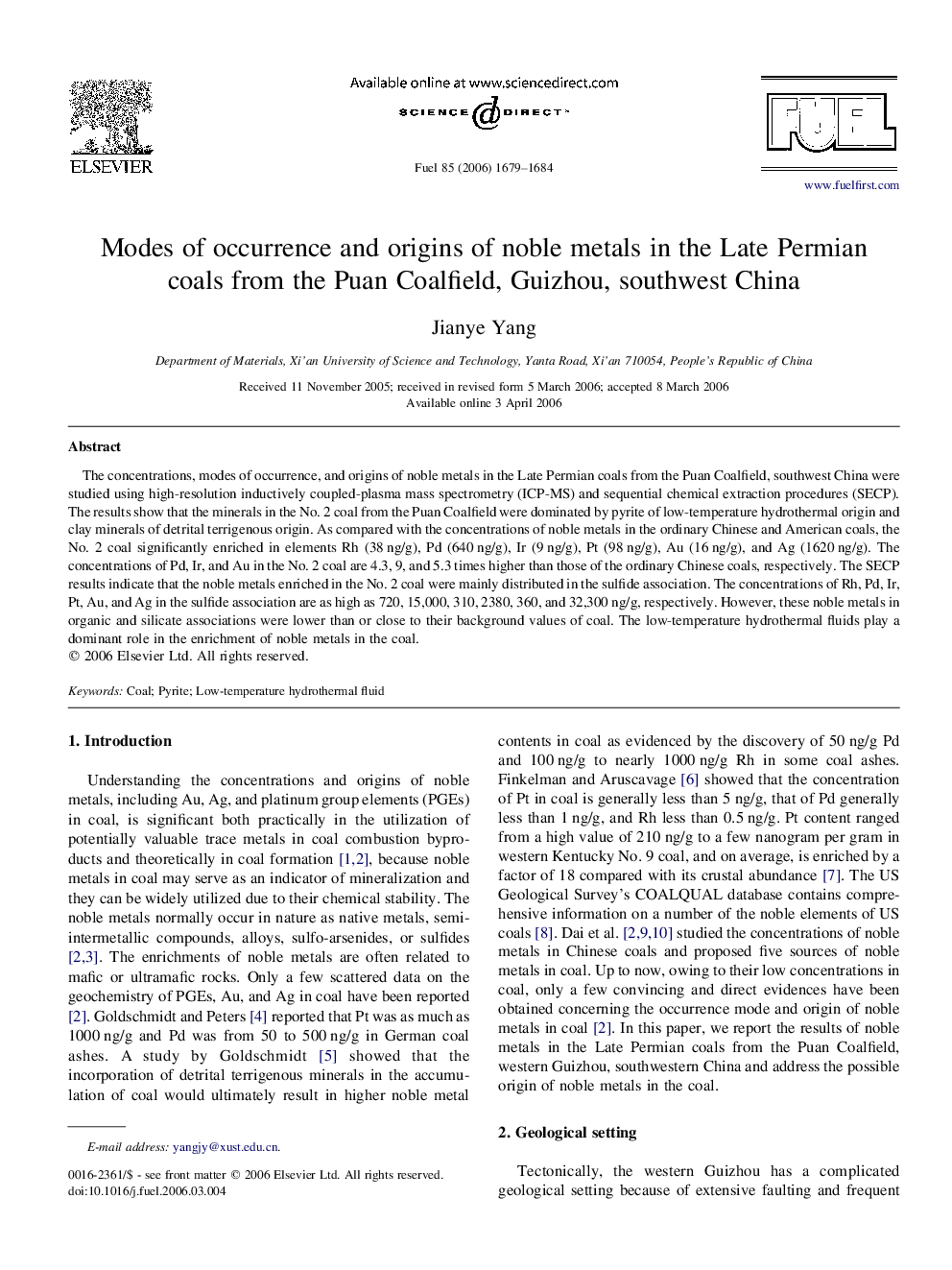| Article ID | Journal | Published Year | Pages | File Type |
|---|---|---|---|---|
| 208510 | Fuel | 2006 | 6 Pages |
The concentrations, modes of occurrence, and origins of noble metals in the Late Permian coals from the Puan Coalfield, southwest China were studied using high-resolution inductively coupled-plasma mass spectrometry (ICP-MS) and sequential chemical extraction procedures (SECP). The results show that the minerals in the No. 2 coal from the Puan Coalfield were dominated by pyrite of low-temperature hydrothermal origin and clay minerals of detrital terrigenous origin. As compared with the concentrations of noble metals in the ordinary Chinese and American coals, the No. 2 coal significantly enriched in elements Rh (38 ng/g), Pd (640 ng/g), Ir (9 ng/g), Pt (98 ng/g), Au (16 ng/g), and Ag (1620 ng/g). The concentrations of Pd, Ir, and Au in the No. 2 coal are 4.3, 9, and 5.3 times higher than those of the ordinary Chinese coals, respectively. The SECP results indicate that the noble metals enriched in the No. 2 coal were mainly distributed in the sulfide association. The concentrations of Rh, Pd, Ir, Pt, Au, and Ag in the sulfide association are as high as 720, 15,000, 310, 2380, 360, and 32,300 ng/g, respectively. However, these noble metals in organic and silicate associations were lower than or close to their background values of coal. The low-temperature hydrothermal fluids play a dominant role in the enrichment of noble metals in the coal.
